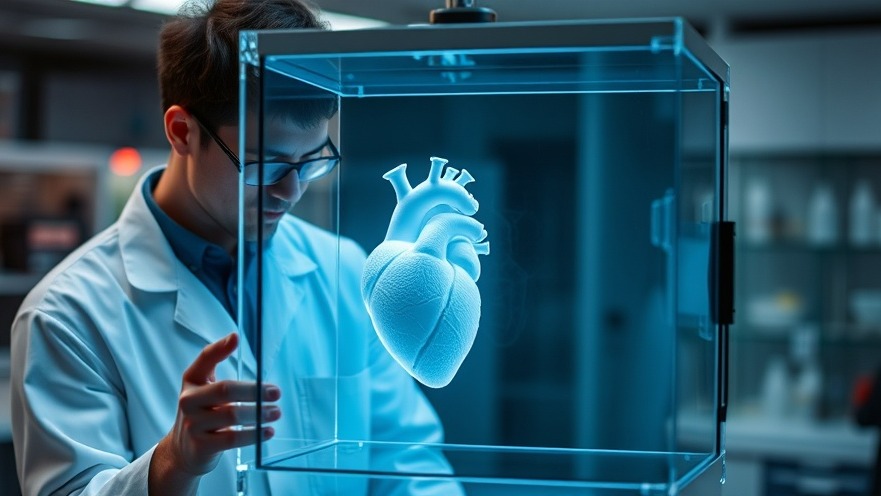
The Future of Organ Transplants: 3D Printing and Personalized Medicine
As the demand for organ transplants continues to swell in the U.S., with over 100,000 individuals waiting for life-saving procedures, the need for innovative solutions has never been more pressing. Traditional organ donation methods often lead to prolonged waiting periods, which can be detrimental to patients' health. Researchers are now looking toward the revolutionary potential of regenerative medicine to create personalized organs from a patient's own cells. However, one main challenge remains: how do we ensure that these engineered organs receive adequate blood supply?
Streamlined Vascular System Design Revolutionizes Organ Fabrication
Researchers at Stanford University have made significant strides in solving the vascular supply puzzle. Their new algorithm, published recently in Science, significantly accelerates the design process for the vascular networks necessary to support 3D-printed organs. Alison Marsden, one of the leading researchers, revealed that their technology can generate complex vascular architectures 200 times faster than previous methodologies. This breakthrough could be a game-changer in organ printing, allowing for a more efficient and effective approach to producing viable hearts, livers, and kidneys on demand.
Understanding the Importance of Vascular Systems in Organs
The human body is a marvel of biological engineering, wherein blood carries essential oxygen and nutrients to organs via a complex network of arteries, veins, and tiny capillaries. In particular, metabolically active organs like the heart require intricate vasculature due to their high demand for oxygen and nutrients. Up to 2,500 capillaries can fit in a single millimeter cube, emphasizing the complexity involved in replicating these systems artificially.
The Science Behind the Algorithm
Using advanced simulations and real-time computational power, Stanford's team developed an open-source tool known as SimVascular. This software allows researchers to create detailed models of vascular structures that more closely resemble those found in human organs. By mimicking the natural branching patterns of blood vessels, this algorithm addresses previous limitations that relied on standardized lattices, which can fail to scale up effectively with larger tissues.
Potential Impact on Patient Care
For concierge health practitioners, this innovative approach to organ printing and vascular design holds immense potential for patient care. By integrating 3D-printed organs that utilize a patient’s own cells, we could significantly reduce the risk of rejection and the associated waiting times for organ transplants. This technology enables tailored medical solutions that can enhance recovery and improve health outcomes overall.
Challenges Ahead: Safe Implementation and Accessibility
Despite these exciting developments, significant challenges remain in the transition from lab to clinical application. Ensuring that these bioprinted tissues can be safely produced and implemented in patients is paramount. Healthcare professionals must also consider the accessibility of these advanced technologies to ensure they aren’t confined to elite medical centers but rather available to all patients who need them.
Final Thoughts: A New Era for Personalized Medicine
The journey toward fully bioprinted organs is well underway, offering a glimmer of hope for those waiting on transplant lists. As advancements continue in this field, it’s crucial for health practitioners to remain updated on these innovations. Embracing these changes could transform patient experiences, making procedures safer, quicker, and more effective. Keep an eye on this groundbreaking progress in organ engineering—it may just redefine medical possibilities as we know them.
At this juncture, it’s more important than ever for health practitioners to stay informed and engaged with these technological advancements. Subscribe to leading health tech newsletters, and actively participate in forums discussing the implications of 3D printing in medicine—the future of patient care may depend on it!
 Add Row
Add Row  Add
Add 






Write A Comment